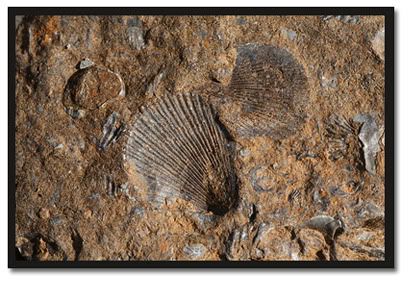Evolutionary History
 The first living organisms of mollusks dated back to 545 million years ago in the earliest Cambrian time. The species was evolved from their ancestral group, Lophotrochozoa, but their record of origin was not discovered by the fossil record. In the late Cambrian time, marine deposits dating back to this time had the fossils of the first forms of mollusks. There was a major radiation of mollusk that occurred during the Ordovician and there were fossils of thousands species of mollusks that were found in three main classes, gastropods, bivalvia and cephalopoda. At this time, it was the major evolutionary diversity for the phylum and became common in most marine ecosystems.
The first living organisms of mollusks dated back to 545 million years ago in the earliest Cambrian time. The species was evolved from their ancestral group, Lophotrochozoa, but their record of origin was not discovered by the fossil record. In the late Cambrian time, marine deposits dating back to this time had the fossils of the first forms of mollusks. There was a major radiation of mollusk that occurred during the Ordovician and there were fossils of thousands species of mollusks that were found in three main classes, gastropods, bivalvia and cephalopoda. At this time, it was the major evolutionary diversity for the phylum and became common in most marine ecosystems. In the Devonian era, bivalves evaded the freshwater, and snails started to become prominent on land during the Carboniferous era. During the Devonian, ammonoids also took over from the nautiloids as the dominant cephalopod group, and these creatures continued to flourish throughout the entire Mesozoic while living with ancestors of current bivalves and gastropods.
During the Cretaceous, most mollusks took on the form of the modern mollusks, all except for the cephalopods which still had the Mesozoic ammonites and belemnites.
Although there was a vast population of the ammonoids, they became extinct in the Cretaceous era, during the same time as the dinosaurs. Many clams and snails also disappeared at the end of Cretaceous, including the rudists, a group of bivalved mollusks that lived as much as modern reef building organisms. The disappearance of these marine animals opened up environmental niches to be filled by a radiation of new species of all types of animals at the beginning of the Cenozoic.
The Cenozoic marks the time period when the modern groups of mollusks evolved, beginning with the marine clams and snails following the end of the Mesozoic. During the last million years land and fresh-water clams and snails following the end of the Mesozoic. during the last million years land and fresh-water mollusks have evolved rapidly, occupying the terrestrial and oceanic lands.
Fossils found in the Ediacaran and early Cambrian era propose a debate whether the species should be classified as mollusks. These species have similar structures as mollusks, but also show similarities to other species of other classes and phylum. An example is Wiwaxia from about 505 million years ago. It had similar feeding apparatus, a type of radula but it also showed similarities to the ones of polychaete worms.

